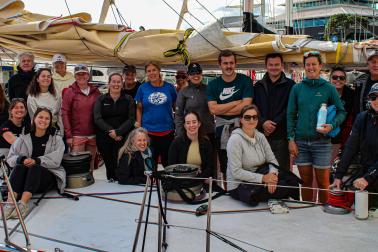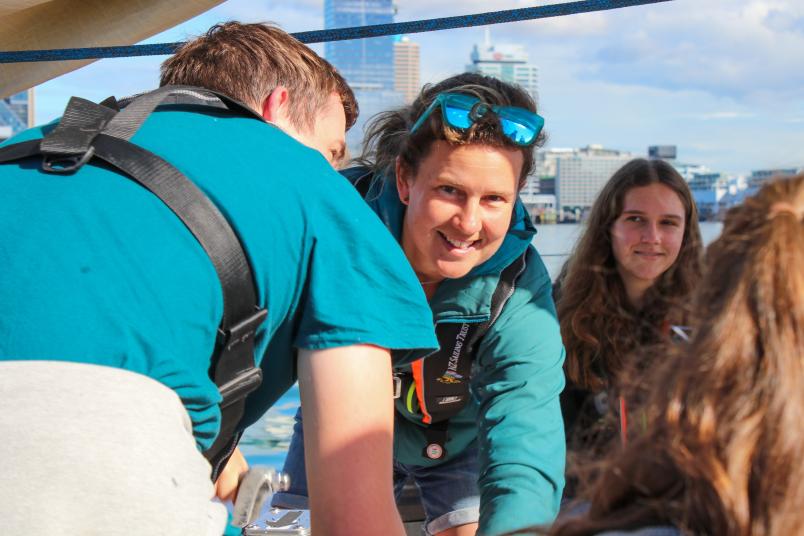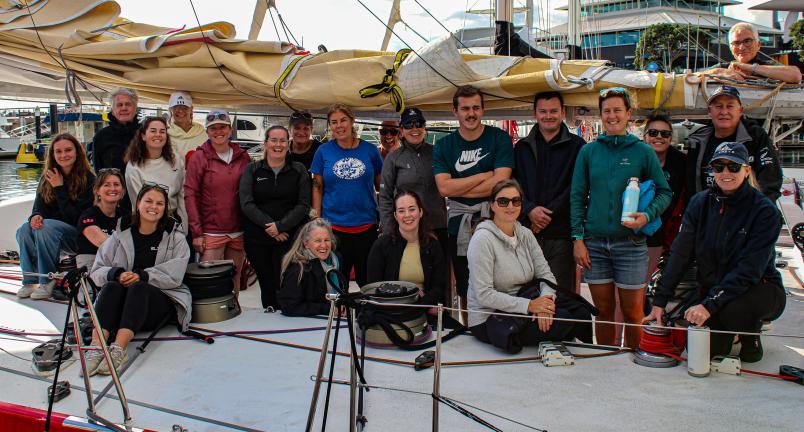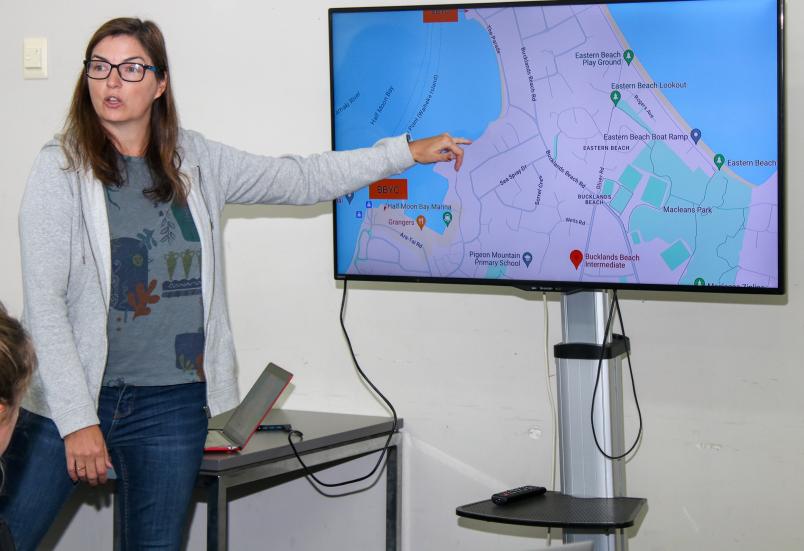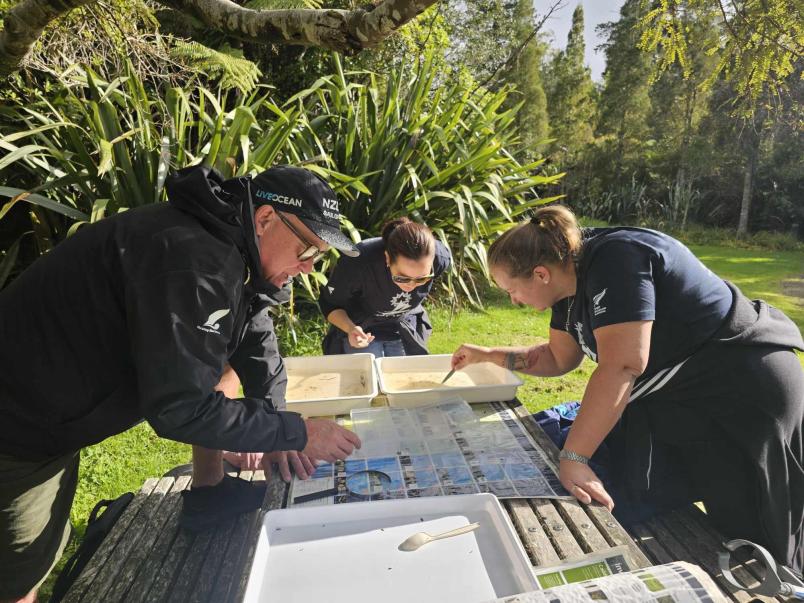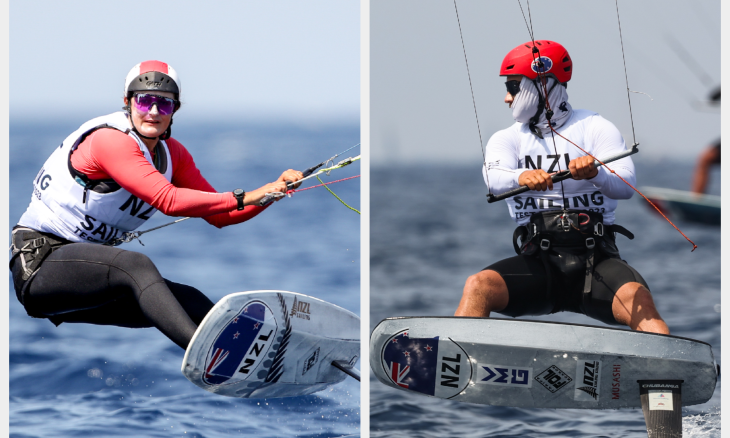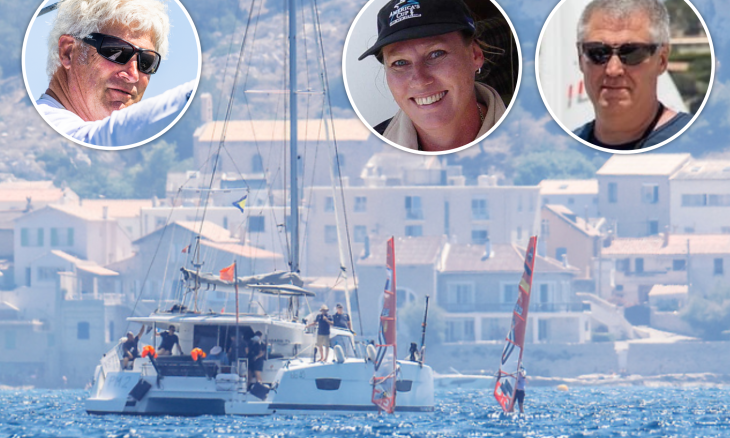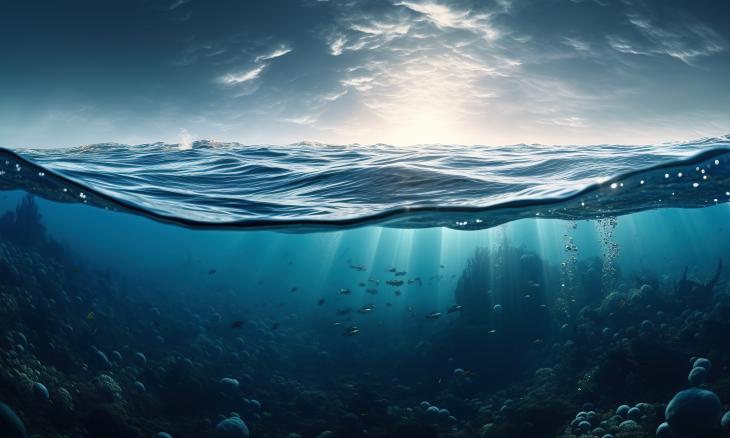Making a meaningful difference in your immediate environment doesn't have to be hard work - but it does need a plan.
Fortunately, there was no shortage of innovative sustainability solutions on display at the Moanamana Wānanga, hosted by Yachting New Zealand and Blake New Zealand in Auckland late last month.
The initiative put a new spin on the popular Blake Inspire for Sailors programme, run annually, and was similarly aimed at fostering greater connections and driving practical solutions to the environmental challenges faced by our sailing community.
According to Yachting New Zealand's education lead, Alisa Torgersen, the four-day wānanga incorporated many of the same elements as Blake Inspire for Sailors.
"Moanamana is the third module of our RŪNĀ education program, which at its core is about respecting our waters and understanding not only what is on top but also what is underneath," Torgersen explains.
"The week saw teachers from nine schools across New Zealand, as well as coaches and managers from nine of our yacht clubs, spend four days immersing themselves in some of these Moanamana activities."
These included using various science monitoring tools like underwater cameras, recording data with the Marine Metre Squared project, and testing water quality and temperatures. Participants also took some time to better understand the different species that should and shouldn't be in our marine environments.
The week started with a sail on the famed Steinlager 2, before participants took a virtual look at flourishing and degrading seabeds, walked the ecology trail at Tāwharanui Regional Park, and snorkelled at Goat Island.
"It's been really great to learn more about the Moanamana module and how that can tie the community of schools and our yachting clubs together to improve the marine life in our area," says Kathryn Jackson, in-school leader for environmental education at Bucklands Beach Intermediate School.
"It doesn't have to be complicated to start and to get students and the community involved in caring for the environment. At Bucklands Beach, we are really lucky to have two beaches on our doorstep as well as a yacht club to support us. Making those connections is really important, and not taking our environment for granted is probably the most important thing we need to instil in our students."
Sarah Johns, a teacher at Nelson Intermediate School, agrees.
"It's been a really good experience. As a teacher, we have had a chance to try some practical ways to collect data and monitor the environments that we're sailing in. Being able to do that, and to have the time to do that, means that when I go back to school, I'll be able to activate that with my colleagues in our classrooms because we have less fear around the doing side of things."
Worser Bay Boating Club coach Annabel Grindell found it inspiring to share ideas with a large group of like-minded individuals from across the country.
"I've met some great people doing this, and I feel like all of our ideas have kind of accumulated together, and I think we've all inspired each other," she says.
"I feel strongly about including people because when you do get people involved in these sorts of things, they become invested and passionate because they are part of something. Being able to bring people into the club with open days and carnivals and being able to show them what they can do and help with, I believe that will have an amazing effect on all the marine life in that area because there will be a massive uptake in people who actually care about it."
Participants were tasked with developing action plans to address the environmental challenges at their clubs and schools and to introduce more people in their local sailing communities to efforts to be more sustainable.
"My goal is to set up an eight-week lesson plan, preparing my enviro students for this field trip and teaching them about the ocean and simple observation and recording programmes that we can use to gather data and hopefully push to have our little area become a Blue Belt site or at least a high protection zone," Jackson says.
Nelson Yacht Club's focus will be on the kororā – or little penguin – living under its floorboards. At just over 25 cm and weighing about 1 kg, the kororā is the world’s smallest penguin.
Though native to New Zealand, their numbers have been steadily declining in areas not protected from predators.
"Our action plan is going to be around the penguins that live under the club. It's important that we look after them and ensure that they can continue to live there whilst we do our activities alongside," Kat Banks, the club's chief sailing instructor, explains.
"It is their home, rather than ours, after all."
John McDougall, a teacher at Wellington's Worser Bay School, has been involved in RŪNĀ for several years and will be focusing on finding new ways of introducing the programme to students.
"Our challenge is finding ways to hook kids into these ideas - and sailing clubs are an obvious way," he says. "I really love this idea of collaborative knowledge building by tapping into experts like Sally [Carson, the director of the New Zealand Marine Studies Centre]."
Yachting New Zealand's national sport development director, Raynor Haagh, praised the group's efforts during the week.
"RŪNĀ is such an important framework for yacht clubs to engage with their communities, lead in the environmental space, and engage with the wider diversity of New Zealanders," she says.
"It's really important that our clubs are leaders and are guardians of their lands and the precious waters that they've got connected to their clubs."
For more on the Moanamana module, click here.
